An impulsive solar flare measuring X2.5 erupted from Active Region 3576 (beta-gamma) at 06:53 UTC on February 16, 2024. The event started at 06:42 and ended at 06:58 UTC. This is the fourth strongest solar flare of Solar Cycle 25 — after X5.0 on December 31, 2023, X3.3 on February 9, 2024, and X2.8 on December 14, 2024.
A Type II (estimated velocity of 2 674 km/s) and Type IV radio emissions were detected at 06:53 UTC, indicating a strong coronal mass ejection (CME) and solar radiation storm were associated with the event.
In addition, a 10cm Radio Burst (Tenflare) lasting 5 minutes and with a peak flux of 420 sfu was also associated with the event. A 10cm radio burst indicates that the electromagnetic burst associated with a solar flare at the 10cm wavelength was double or greater than the initial 10cm radio background. This can be indicative of significant radio noise in association with a solar flare. This noise is generally short-lived but can cause interference for sensitive receivers including radar, GPS, and satellite communications.
The location of this region (SW limb) does not favor Earth-directed CMEs but S1 or greater solar radiation storm is expected.
It is possible a part of the CME is Earth-directed.
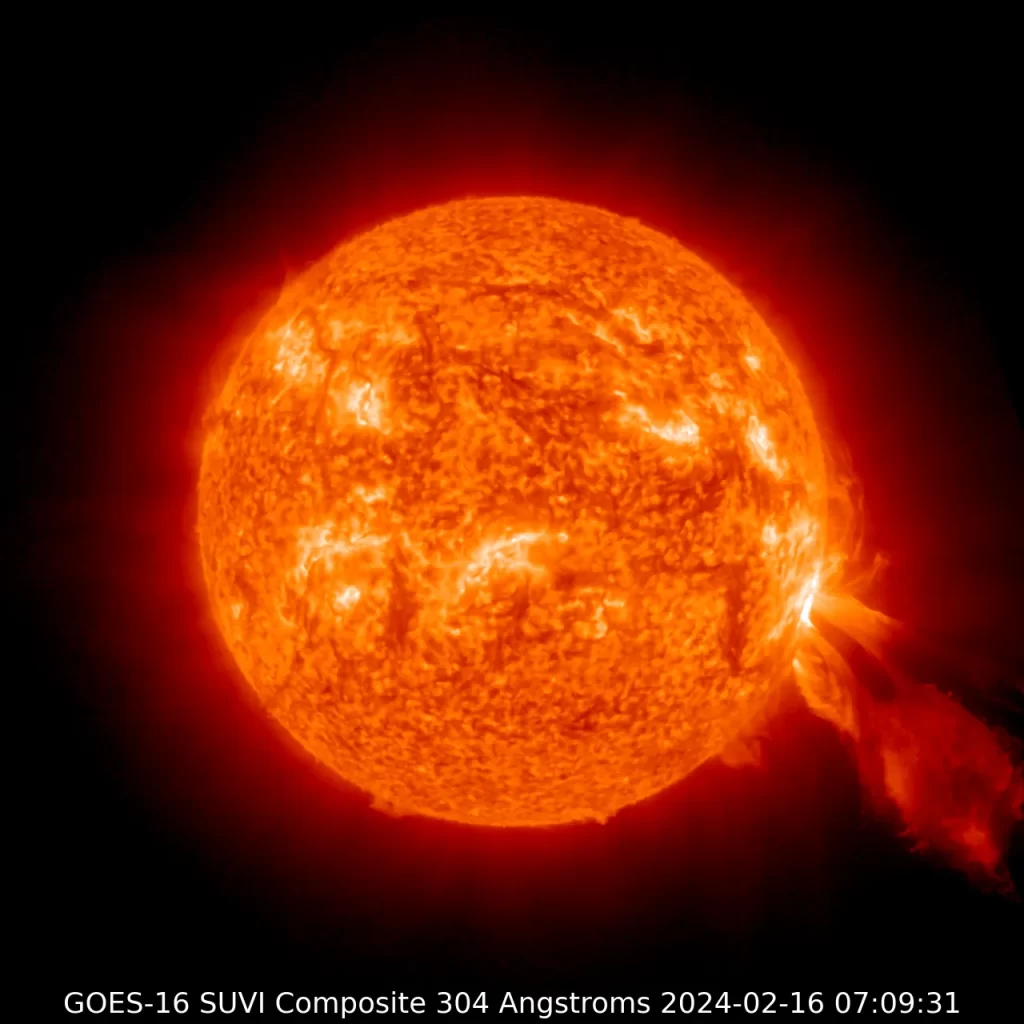
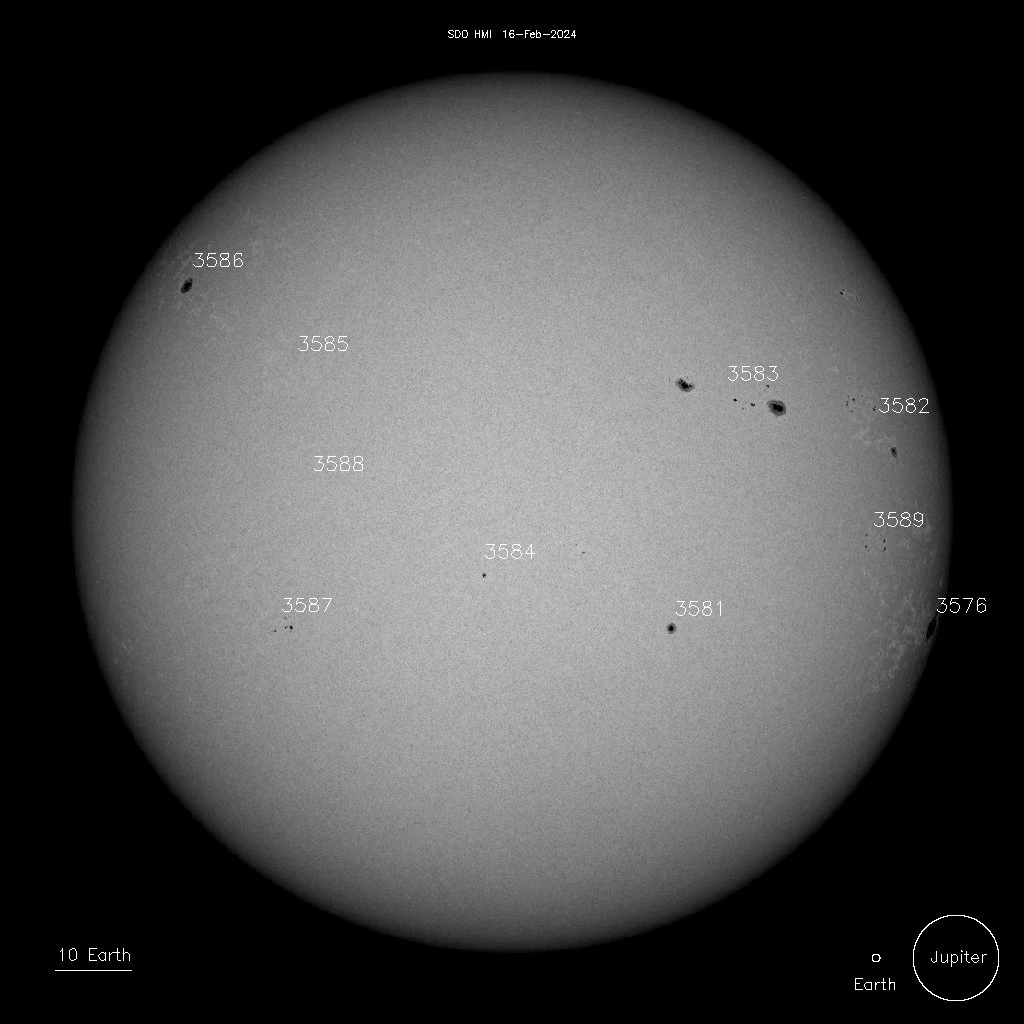

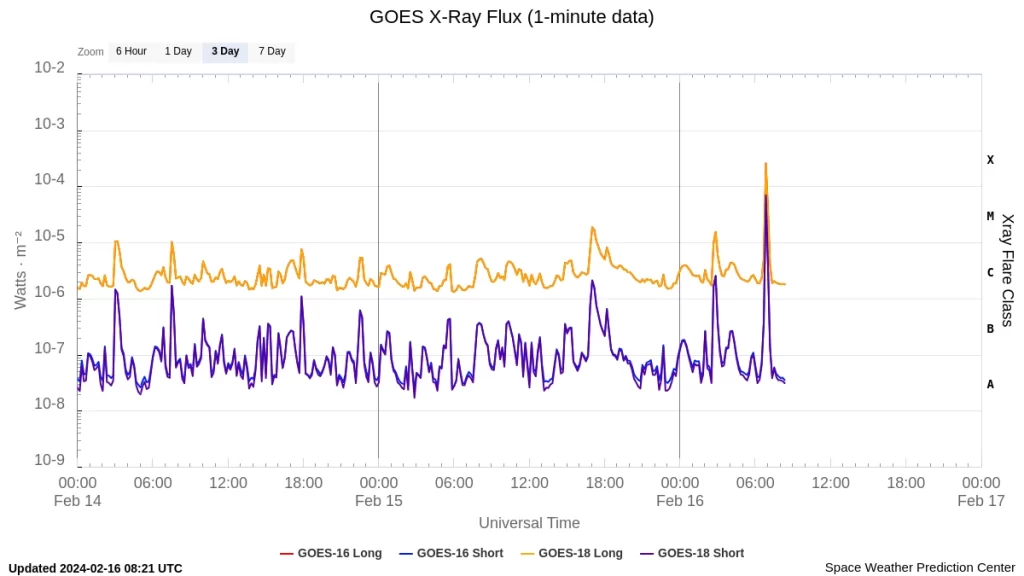

Radio frequencies were forecast to be most degraded over eastern Africa, the Middle East, India, China, the Indian Ocean, and western Australia at the time of the flare.
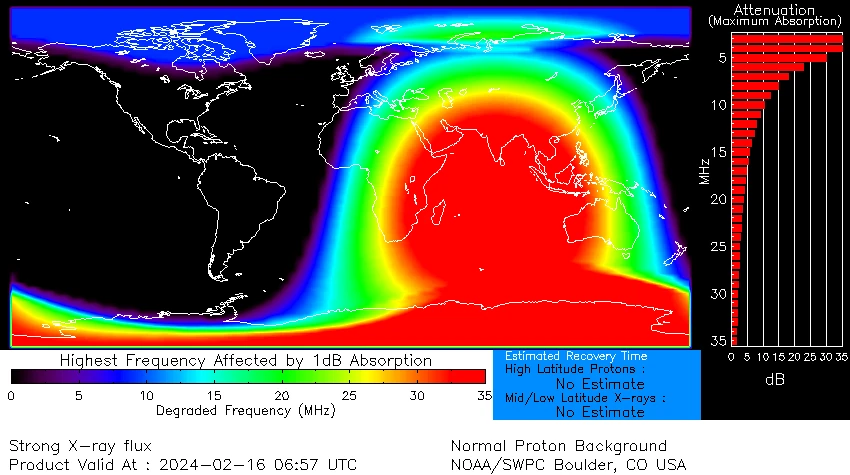

Proton flux started rising at 07:10 UTC and is expected to reach S1 or greater values in hours ahead.
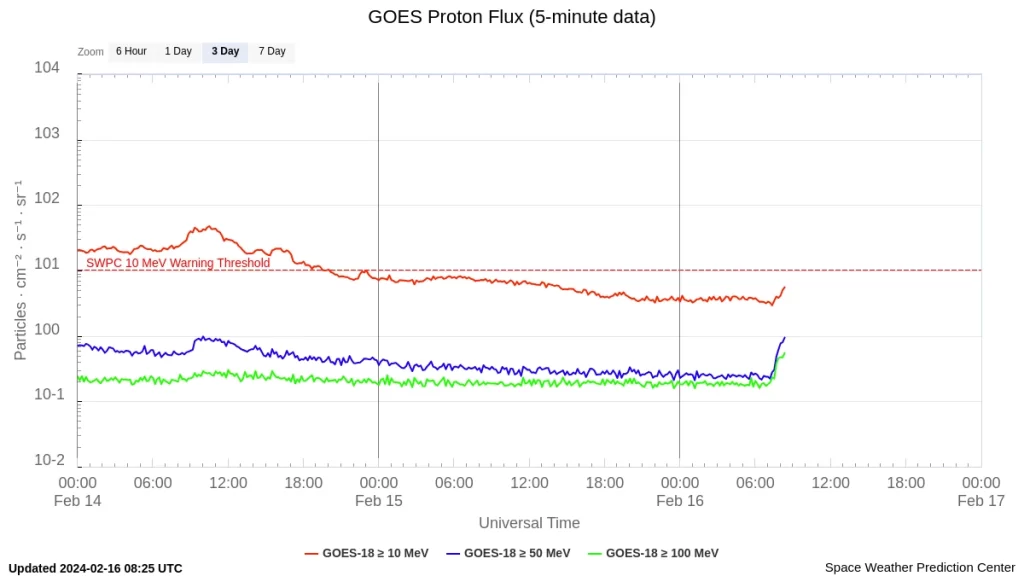

Analysis of this event is still in progress.
Featured image credit: NASA SDO/AIA 304
If you value what we do here, create your ad-free account and support our journalism.
Three CMEs heading toward Earth, impact expected on February 13
Monday, February 12, 2024
Proton flux rising after powerful farside eruption, S1 – Minor solar radiation storm
Monday, February 12, 2024
M6.5 solar flare erupts from AR 3576, G2 – Moderate geomagnetic storm watch
Monday, February 12, 2024
Strong M9.0 solar flare erupts from geoeffective Region 3576
Saturday, February 10, 2024
Major X3.3 solar flare erupts behind the SW limb, S2 – Moderate solar radiation storm
Friday, February 9, 2024
Long-duration M5.1 solar flare erupts from Region 3575
Wednesday, February 7, 2024
Long-duration M4.2 solar flare erupts from Region 3575
Tuesday, February 6, 2024